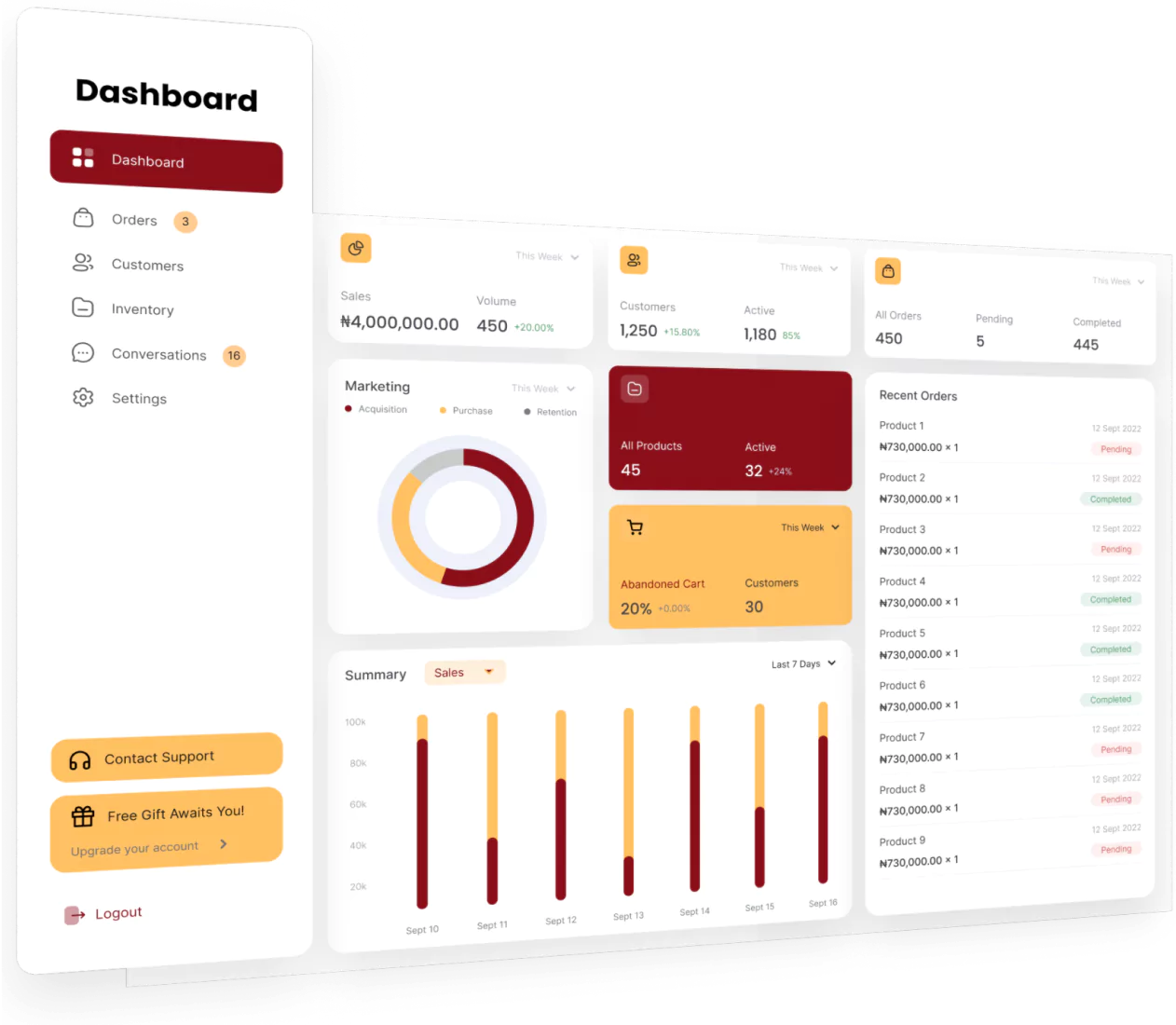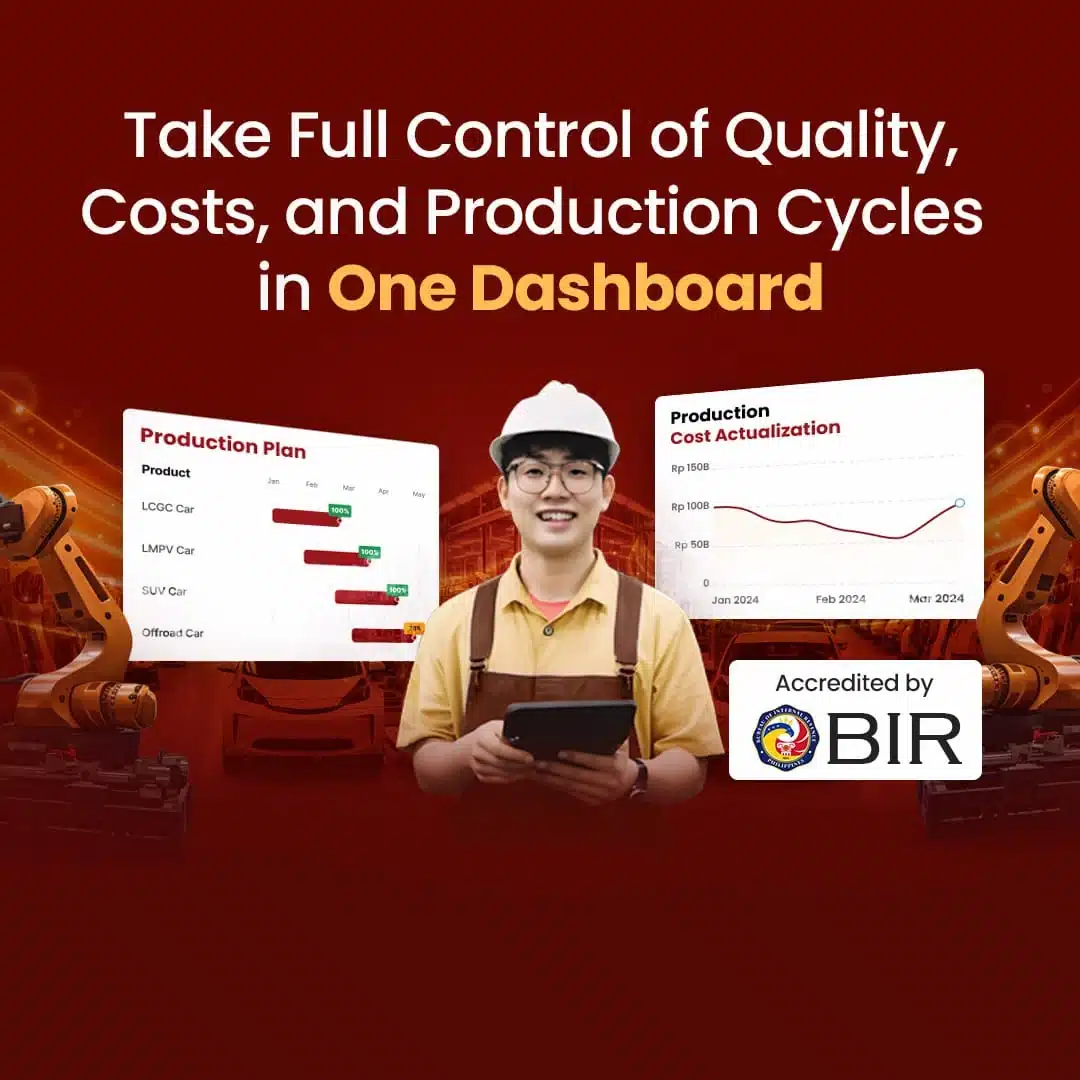Many businesses focus on final outputs but the smartest ones optimize the inputs. In any efficient manufacturing or supply chain operation, intermediate goods is a crucial, though often overlooked, role. These are the components, materials, or partially completed products used to create finished goods.
While they don’t reach end consumers directly, It’s are essential for maintaining production flow, managing inventory, and controlling costs. For businesses using an ERP system, understanding and accurately tracking is key to improving operational visibility and profitability.
In this article, we’ll break down what intermediate goods are, their categories, and their impact on everything from pricing to financial reporting. Basahin pa upang malaman kung paano makakatulong ang mas malalim na kaalaman tungkol sa intermediate goods sa mas matalinong pagpaplano ng negosyo.
Key Takeaways
|
Table of Contents

What are Intermediate Goods?
Intermediate goods are products that are used as inputs in the production of other goods or services. They are not sold directly to consumers, but rather is a key role in the manufacturing process, serving as components, raw materials, or partially finished products that are further processed or assembled into final goods.
Because they sit between raw materials and the finished product, they play a crucial role in keeping production efficient and maintaining an accurate Bill of Materials.
How do Intermediate Goods Work?
To understand the role of intermediate goods in business operations, it’s important to see how they move through the production cycle.
These goods are not the final product, but they are essential at every stage leading up to it, especially in the context of advanced manufacturing, where precision and efficiency are critical. Here’s how its work in a typical production process:
- Businesses begin by sourcing raw materials or semi-finished goods that will be used in the production of intermediate goods or directly in the final product.
- These materials are then processed, refined, or assembled into intermediate goods. At this stage, they are not ready for the end user but serve as essential building blocks.
- Intermediate goods are passed on to the next stage in the production chain, either within the same company or to another manufacturer, where they are combined or transformed into finished goods.
- Throughout the process, intermediate goods are tracked in the company’s inventory system. Accurate cost allocation at this stage is crucial for budgeting, pricing, and financial reporting.
- After going through one or more production stages, intermediate goods are finally converted into finished products, ready for sale to consumers or other businesses.
Intermediate Good Categories
Intermediate goods can be categorized based on their function and stage in the production process. Understanding these categories helps businesses manage supply chains more effectively and allocate production costs accurately. Generally, It’s fall into the following main categories:
1. Raw materials (Processed)
These are raw materials that have been processed but are not yet finished products. Examples include refined oil used in plastics production or milled flour used in baking. They are transformed further before becoming consumer goods.
2. Component parts
These are pre-made parts or units that are assembled into larger products. Common examples include car engines, computer chips, or textile pieces used in clothing. They are critical in complex manufacturing operations.
3. Semi-finished goods
These goods have undergone some manufacturing but require additional processing or assembly. For instance, a metal frame for furniture or a partially assembled electronic board would be considered semi-finished.
Examples of Intermediate Goods
Intermediate goods take many forms, depending on the industry and the type of final product being manufactured. These goods are not sold directly to end consumers, but instead serve as essential inputs in the production of finished goods.
They can be either processed raw materials or partially assembled products, often categorized as Work in Progress (WIP) during various stages of production. Below are several common and industry-relevant examples:
- Steel and aluminium: Widely used in the automotive, construction, and machinery sectors as core materials for creating vehicles, buildings, and industrial equipment.
- Flour and sugar: Used by food and beverage manufacturers to produce products like bread, pastries, and packaged goods.
- Textiles and fabrics: Key inputs for clothing and upholstery manufacturers, often processed further into garments, curtains, or furniture coverings.
- Electronic components: Such as semiconductors, circuit boards, and sensors, are assembled into smartphones, laptops, or appliances.
- Glass and plastic sheets: Used in packaging, automotive manufacturing, and electronics casing.
Understanding these examples helps illustrate how intermediate goods add value throughout the production chain, bridging the gap between raw materials and final consumer products.
Intermediate Goods vs Capital Goods
While both intermediate goods and capital goods are used in the production process, they serve very different purposes. Understanding the distinction between them is essential for accurate financial reporting, inventory classification, and strategic planning. Here’s a clear comparison to help differentiate the two:
| Aspect | Intermediate Goods | Capital Goods |
| Definition | Goods used as inputs in the production of final products | Goods used to produce other goods or services over time |
| Consumption | Fully consumed or transformed during production | Not consumed; used repeatedly in production |
| Examples | Fabric, steel, flour, and electronic components | Machinery, tools, factory equipment, vehicles |
| Accounting Treatment | Recorded as part of production costs (COGM/COGS) | Recorded as fixed assets and depreciated over time |
| Sold to Consumers? | No, used only in the production chain | No, used internally by businesses to support operations |
| Role in Production | Direct input to become part of the final product | Enable or facilitate the production process |
Intermediate Goods vs Consumer Goods
To manage production and sales well, it’s essential to understand the difference between intermediate and consumer goods. The former are used in production, while the latter are purchased by end users.
The table below highlights the key differences between these two types of goods:
| Aspect | Intermediate Goods | Consumer Goods |
| Definition | Goods used as inputs in the production of final products | Finished products intended for direct consumption by consumers |
| End User | Businesses or manufacturers | Individual consumers or households |
| Consumption Stage | Not consumed directly; used to create other goods | Consumed or used directly without further transformation |
| Examples | Fabric, steel, sugar, electronic components | Clothing, smartphones, packaged food, furniture |
| Purpose | To be processed or assembled into other goods | To fulfill personal or household needs |
| Sales Channel | Typically B2B (business-to-business) | Typically B2C (business-to-consumer) |
Intermediate Goods and Gross Domestic Product (GDP)
Intermediate goods are essential to the production process but are not included directly in Gross Domestic Product (GDP) calculations. This is because GDP measures the total market value of all final goods and services produced within a country during a specific period. Including its would result in double counting, as their value is already embedded in the price of the final product.
For example, if a car manufacturer purchases steel to produce vehicles, the value of the steel is not counted separately in GDP only the value of the finished car is. By excluding intermediate goods, economists ensure a more accurate representation of economic output and avoid inflating GDP figures.
Understanding this distinction helps business leaders and financial professionals better interpret economic data and make informed decisions regarding investment, pricing, and production efficiency.

Optimize Your Intermediate Goods Management with HashMicro’s ERP Solutions
Effectively managing goods is key to ensuring smooth production processes, accurate cost control, and optimized inventory levels. Manual tracking often leads to inefficiencies, delays, and data discrepancies, especially as operations scale.
HashMicro’s ERP solutions offer an integrated, automated approach to managing production inputs with precision and visibility across your entire supply chain. Here are some of the core features that support your business in handling them efficiently:
- Real-Time Inventory Tracking: Gain instant visibility into the movement and usage of intermediate goods across multiple locations and warehouses.
- Bill of Materials (BoM) Management: Track the structure and costs of all intermediate components involved in multi-level production processes.
- Automated Stock Replenishment: Prevent shortages and overstock by automating reorder points based on production needs and consumption rates.
- Integrated Production Planning: Align intermediate goods usage with production schedules, reducing idle inventory and minimizing waste.
- Hashy AI Assistance: Make smarter inventory and production decisions with AI-powered insights that analyze usage patterns, forecast demand, and recommend real-time actions for efficiency.
With HashMicro ERP, manufacturers can reduce manual errors, make smarter purchasing decisions, and ensure that every intermediate input is fully optimized.
Conclusion
Understanding intermediate goods is essential for any business involved in production or supply chain operations. These goods directly impact cost efficiency, inventory accuracy, and the overall value of final products. By managing them effectively, companies can streamline processes, reduce waste, and improve profitability.
To support better control and visibility over intermediate goods, the HashMicro system is tailored to modern manufacturing and distribution needs. From real-time inventory monitoring to automated cost allocation, our solution helps you simplify operations and make informed decisions faster.
Request a free demo today to discover how HashMicro can help you manage your intermediate goods more efficiently and drive sustainable business growth.








































